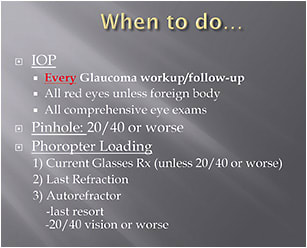Focus on these areas to fine-tune your optical staff
Optician training and development helps an optical practice have qualified employees, retain talent, and improve employee satisfaction and morale. Investing in training also improves productivity, which can lead to greater optical efficiency and an increased profit.
Below are three areas to focus on in training.
ONBOARDING TRAINING
Every practice should have an onboarding plan for new opticians, which should include skillset, computer, EHR, phone call, employee handbook, product, and customer service training.
This training can include video, reading material, shadowing, and hands-on modalities such as demonstrating in-person how to adjust a frame by hand. In our office, we have a 9-page onboarding checklist that new hires must complete before they are ready to be on the floor solo; the checklist includes everything from how to open/close the office, to placing a glasses order. A thorough onboarding plan ensures long-term success by helping to minimize turnover. It gives the new-hire optician the confidence needed to perform the job’s tasks.
CONTINUOUS TRAINING
As new products and technology are released, on-going training is imperative to remain relevant and efficient in the optical. While it may seem that ongoing training can take away from “time on the floor,” it usually leads to long-term benefits, such as greater sales and efficiency.
Continuous training also leads to improved job fulfillment for the optician, as most people enjoy learning and being engaged in the workplace. The lack of continuous training leads to higher employee turnover, due to boredom, and missed opportunities to showcase the latest product or technology developments.
On-going training topics include optical skillsets, product education, technology education, enhancing customer service, and various ocular diseases. I even like to use case reports in continuous training for opticians to show how various eye diseases could impact a patient’s clarity or experience with their spectacles.

TRAINING MODALITY
People have different learning styles, so having a mixture of hands-on, didactic, visual, and audible learning opportunities helps information sink in deeper. Tailor these training modalities to best suit each employee and that will, in turn, make the optical more efficient and successful. Try asking your employees if they are more of an audio or visual learner — in my experience, most people know which of the two works better for them, and you can adjust training based on their preferences.
We use a variety of training techniques in our office, such as webinars, videos, scenario role-playing, workshops, quizzes, and mini-lectures.
Some training is done in-house by our leadership and doctors, and other training takes place through local optical industry representatives and state/national conferences. Spaced repetition of training is effective to revisit topics that may need refreshing.
OPTICIAN AND PATIENT SUCCESS
Training remains just as important in the third year of employment as it was on the third day. By giving your new and current opticians the tools they need, you’re ensuring your patients’ success as well as your staff’s. OM




